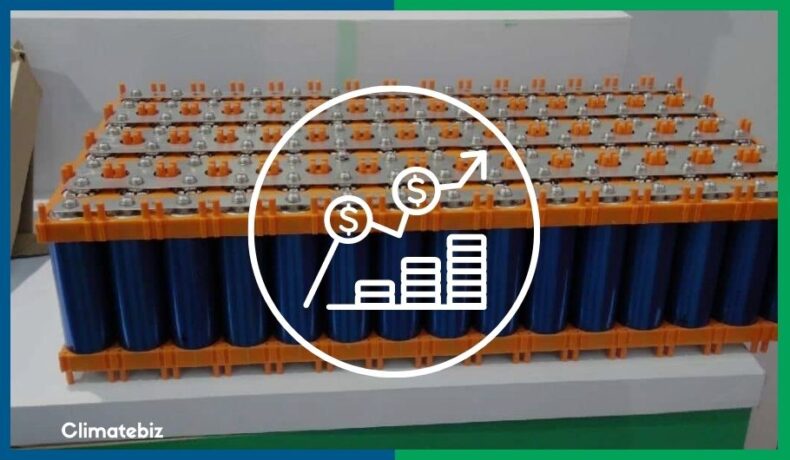You’d be surprised at how little concrete information there is on the internet about solar battery cost.
Type in, “cost of a solar battery“, and you’ll be hit with dozens of unrelated articles — “are solar batteries worth it?”, “how much will storage cost for your PV system?”.
Then, at last! You come across an article that you think will give you the answers you need, only to be hit by a wall, a Tesla Powerwall to be exact. Have a look at the cost of these systems – it doesn’t exactly make for easy reading.
That’s why we’ve put together a cost breakdown (based on our independent research) for solar batteries that are far more accessible and modular.
In this article, you’ll finally get the answers you’ve been longing for!
Table of Contents
Solar Battery Cost Breakdown
Before we go any further, it’s important that we provide you with some context to the information shown in the tables below:
In order for us to provide you with the most accurate solar battery cost estimates, we collected data from over 100 different batteries, from the following manufacturers:
- Renogy
- Battle Born
- Ampere Time
- Relion
- Trojan
- AIMS Power
- Canbat
- SimpliPhi
- KiloVault
- MK/Deka Batteries
- Concorde Battery
- Future Solar
- Crown
- Sun Xtender
- Outback Power
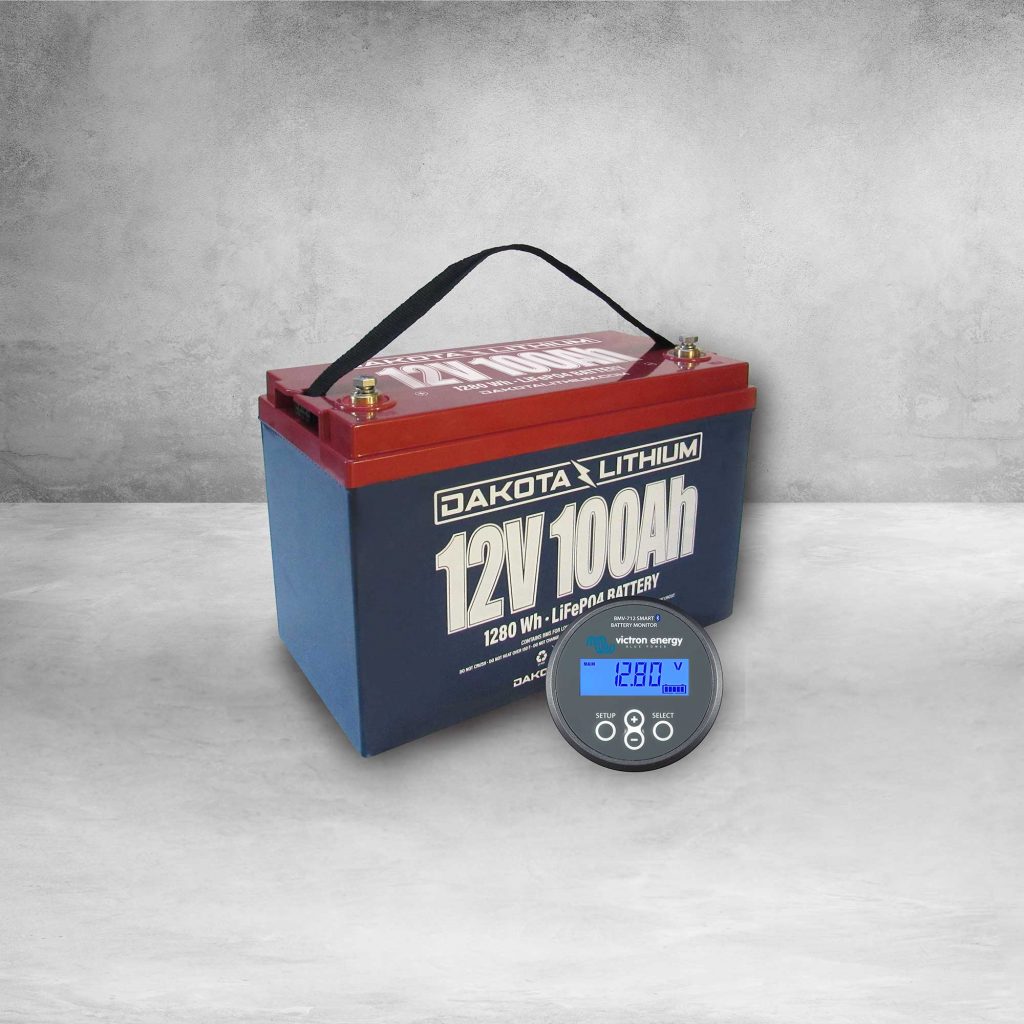
Additionally, we based the solar battery cost estimates according to ampere hour and voltage.
Our Findings
Based on our research, we discovered the following:
- There are a number of manufacturers that don’t provide the prices for their batteries online. This makes it difficult for online consumers to compare and contrast prices.
- The majority of the data that we found related to batteries in the 12V range.
Because of this, we felt it important to focus on 12V Lithium-Iron (LiFePo4), AGM, and GEL batteries.
Technically, we could provide 24V and 48V prices but the sample sizes simply weren’t big enough at those ranges (at least in our books) for us to give you accurate cost estimates. The lack of 24V batteries on the market is actually one of the reasons why many are looking to convert 12V To 24V for better efficiency.
Now, let’s have a look at what we found!
Related Reading: What Can I Run Off A 100Ah Battery?
Average Cost Of Lithium-Iron Batteries (LiFePo4)
| Ampere Hour | Voltage | Average Cost (USD) |
|---|---|---|
| 50 Ah | 12V | $466.69 |
| 100 Ah | 12V | $938.28 |
| 200 Ah | 12V | $1448.56 |
| 300 Ah | 12V | $2480.38 |
Average Cost Of AGM Batteries
| Ampere Hour | Voltage | Average Cost |
|---|---|---|
| 50 Ah | 12V | $226.19 |
| 100 Ah | 12V | $371.74 |
| 200 Ah | 12V | $762.87 |
Average Cost Of GEL Batteries
| Battery Size (Ah) | Voltage | Average Cost |
|---|---|---|
| 100 Ah | 12V | $446.08 |
| 200 Ah | 12V | $1183.33 |
Solar Battery Manufacturer Cost Comparison
Here you’ll find a cost comparison between a variety of manufacturers.
You’ll notice that we haven’t included all of the manufacturers that we originally listed. Again, this is because some of the data sample sizes were too small, or the company simply doesn’t have batteries available in these sizes.
Average Cost Of Lithium-Iron Batteries (LiFePo4)
| Manufacturer | Battery Size (Ah) | Voltage | Average Cost |
|---|---|---|---|
| Renogy | 50 Ah | 12V | $529.99 |
| Battle Born | 50 Ah | 12V | $535.00 |
| Ampere Time | 50 Ah | 12V | $396.47 |
| AIMS Power | 50 Ah | 12V | $389.00 |
| Canbat | 50 Ah | 12V | $433,25 |
| Renogy | 100 Ah | 12V | $816.65 |
| Battle Born | 100 Ah | 12V | $1049.00 |
| Ampere Time | 100 Ah | 12V | $529.99 |
| AIMS Power | 100 Ah | 12V | $649.00 |
| Canbat | 100 Ah | 12V | $1052.21 |
| Renogy | 200 Ah | 12V | $1,299.99 |
| Relion | 200 Ah | 12V | $1,996.95 |
| Ampere Time | 200 Ah | 12V | $913.32 |
| AIMS Power | 200 Ah | 12V | $1270.00 |
| Canbat | 200 Ah | 12V | $1815.06 |
| Battle Born | 300 Ah | 12V | $2900.00 |
| Ampere Time | 300 Ah | 12V | $1139.95 |
| Relion | 300 Ah | 12V | $2914.95 |
| Kilovault | 300 Ah | 12V | $2600.00 |
| Canbat | 300 Ah | 12V | $2446.39 |
Average Cost Of AGM Batteries
| Manufacturer | Battery Size (Ah) | Voltage | Average Cost |
|---|---|---|---|
| Concorde Battery | 50 Ah | 12V | $230.00 |
| MK/Deka Batteries | 50 Ah | 12V | $262.50 |
| Canbat | 50 Ah | 12V | $145.99 |
| Renogy | 100 Ah | 12V | $285.32 |
| MK/Deka Batteries | 100 Ah | 12V | $385.00 |
| Concorde Battery | 100 Ah | 12V | $430.00 |
| Trojan | 100 Ah | 12V | $460.00 |
| Canbat | 100 Ah | 12V | $346.83 |
| Renogy | 200 Ah | 12V | $439.99 |
| Outback Power | 200 Ah | 12V | $832.50 |
| MK/Deka Batteries | 200 Ah | 12V | $845.00 |
| Trojan | 200 Ah | 12V | $855.00 |
| Concorde Battery | 200 Ah | 12V | $970.00 |
Average Cost Of GEL Batteries
| Manufacturer | Battery Size (Ah) | Voltage | Average Cost |
|---|---|---|---|
| Renogy | 100 Ah | 12V | $376.65 |
| MK/Deka Batteries | 100 Ah | 12V | $398.33 |
| Trojan | 100 Ah | 12V | $536.66 |
| Canbat | 100 Ah | 12V | $525,88 |
| MK/Deka Batteries | 200 Ah | 12V | $960.00 |
| Trojan | 200 Ah | 12V | $1,190.00 |
| Future Solar | 200 Ah | 12V | $1,400.00 |
What Factors Determine Solar Battery Cost?
Not all batteries are created equal. Yes, we know that’s very cliché but it’s true nonetheless.
So, now that you’ve had a good look at our solar battery cost estimates, let’s dive into the factors that can influence an individual battery’s price point.
Here are some of the factors that determine the cost of a solar battery:
- Battery manufacturer
- Battery chemistry
- Durability
- Quick charging/discharging
- Battery capacity
Battery Manufacturer
Any solar-related product’s price tag will depend on the company that manufactures them. This goes for inverters, batteries, panels, EV’s, etc.
This can come down to their manufacturing process, marketing strategy, material cost, and other various overheads.
Battery Chemistry
For those of you who’ve taken a look at the above tables – you may have noticed a significant difference in price relative to the type of battery chemistry/technology.
In this article, we’ve included prices for both lithium-iron (LiFePO4) and lead-acid (AGM & GEL) solar batteries. Out of the 3, LiFePO4 batteries tend to be the most expensive – at least initially. Over time, they actually save you money because they last longer.
To explain this, here’s a brief summary from our article – Lead-Acid vs Lithium-Ion (10 Key Differences):
Levelized Cost Of Storage
The Levelized Cost of Storage (LCOS) is the most appropriate way to compare the cost of different battery technologies. This variable is expressed in USD/kWh and takes into account all of the expenses related to energy storage over the lifespan of a battery.
As batteries are maintenance-free, the only cost you incur is the price of the battery itself. Have a look at the table below
| Lithium-ion 12V, 100Ah | Lead-acid 12V, 100Ah | |
| Upfront cost | 739.99 USD | 174.99 USD |
| Depth of discharge | 80% | 50% |
| Total number of cycles | (10 years) – 3600 cycles | (2 years) – 700 cycles |
| Total kWh over lifetime | 3’456 kWh | 420 kWh |
| LCOS | 0.214 USD/kWh | 0.417 USD/kWh |
As you can see — initially, the price of the lithium-ion battery (LiFePO4) costs 4X more than the lead-acid battery.
However, it lasts much longer and thus it has the lower LCOS. In short, over its lifespan, the lithium battery is two times cheaper than the lead-acid.
Durability
The durability of a battery is another factor that greatly influences solar battery cost.
This metric is rated in the number of cycles (charge/discharge) and in years.
A battery’s tolerance towards intermittent charging/discharging is a good example and indicator of durability.
Why? Solar panels are non-linear generators — their power output varies continuously according to the availability of sunlight irradiation. For instance, a passing cloud can drastically influence power variation (several hundreds of watts).
It stands to reason then that your battery should be ready for such events. Fortunately enough, LiFePo4 batteries can handle power fluctuations rather well.
Quick Charging/Discharging
Batteries that come with quick charging/discharging are naturally more expensive.
Lead-acid batteries don’t support quick charge — this makes them cheaper. Their charging time range from 6 to 15 hours and follow a 3-step process:
- Bulk charge — charging voltage increases steadily to its maximum value and charging current is kept at its maximum value. The battery will reach up to 80% of its full capacity in approximately 6 to 8 hours.
- Absorption charge — charging voltage is kept at its maximum value, while the current slowly decreases until the battery is charged at 90-95%.
- Float charge — charging voltage and current decreases to zero, while the battery reaches full charge.
Conversely, lithium batteries are fit for quick charging.
You’re able to charge them to 80% of their full capacity in just 1 to 2 hours (depending on the power output of your charger).
The remaining 20% will take another 2 to 3 hours. Therefore, you can fully charge a lithium-ion battery in 3 to 5 hours.
Both types of batteries support quick discharge and can provide intense pulses of current (hundreds of amps) if required.
Battery Capacity
Battery capacity refers to the maximum amount of energy that can be stored and extracted from a battery. This is expressed in kilowatt-hours (kWh) as well as ampere hours (Ah/Amps).
However, the actual storage capabilities of a battery can vary significantly from the “nominal” rated capacity because of factors such as:
- Temperature
- State of charge
- The type of electric load connected
In summary though, the higher a battery’s capacity, the more expensive it’ll be.
Which Type Of Solar Battery Is Worth The Cost?
Think of it like this — a solar battery’s worth is contextual.
You could go out and buy yourself the most expensive battery on the market, but if its specifications aren’t suited to your needs, then it simply isn’t worth the money.
But that’s a pretty lazy answer — so how do we attack this question?
Well, one of our aims here at Climatebiz is to arm our readers with the knowledge to make informed decisions.
In this case, we’re going to provide you with background information on each type of battery technology. That way, you’ll have a better understanding of what battery type is best suited to your needs.
Lithium-Iron Batteries (LiFePo4) Overview
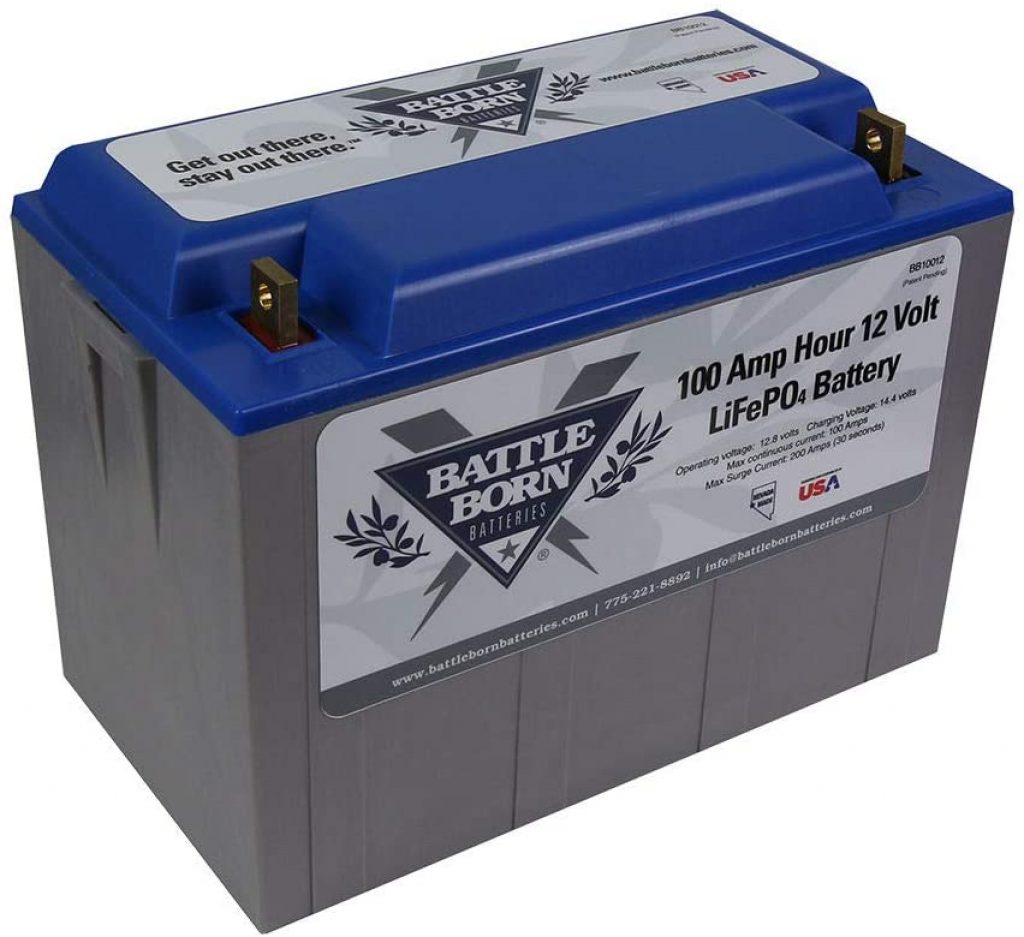
LiFePo4 batteries are the most common type of lithium solar batteries out on the market. They have the following components:
- Positive electrode: Lithium oxide LiFePo4 (Lithium Iron Phosphate)
- Negative electrode: Carbon
- Electrolyte: lithium salt (Li+, gel type)
- Membrane separator
Their working principle is based on the exchange of lithium ions (Li+) from one electrode to another — this is thanks to the electrolyte. This flow of ions generates a current outside the battery cell.
Pros & Cons
Related Reading: Can You Overcharge a Lithium Battery?
GEL Batteries Overview
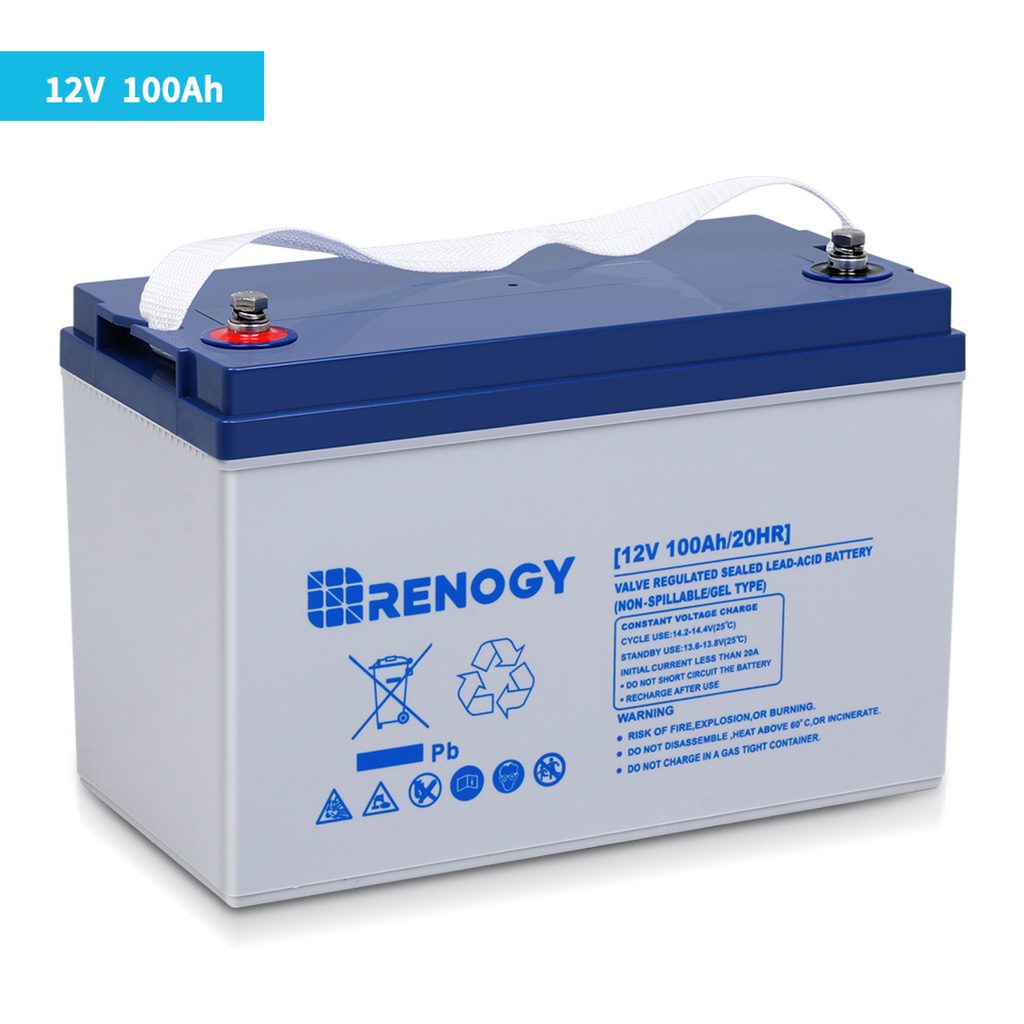
The GEL battery is a type of lead-acid battery that was invented 70 years ago by a German company — Sonnenschein.
It’s both sealed and maintenance-free.
The main feature of this battery is the gel electrolyte. This makes the battery nice and safe — no gas outbursts and electrolyte leakage can occur (under normal usage conditions).
A solar GEL battery contains the following:
- Positive electrode: PbO2 (lead oxide)
- Negative electrode: Pb (pure lead)
- Electrolyte: H2SO4 (sulfuric acid as a gel)
- Membrane separator
The basic working principle of this battery involves the exchange of H+ ions between the positive and negative electrodes through the electrolyte. This movement of ions creates a flow of electrons (electricity) outside the battery to power a load. The opposite reaction occurs when the battery is charged with solar energy.
Pros & Cons
AGM Batteries Overview
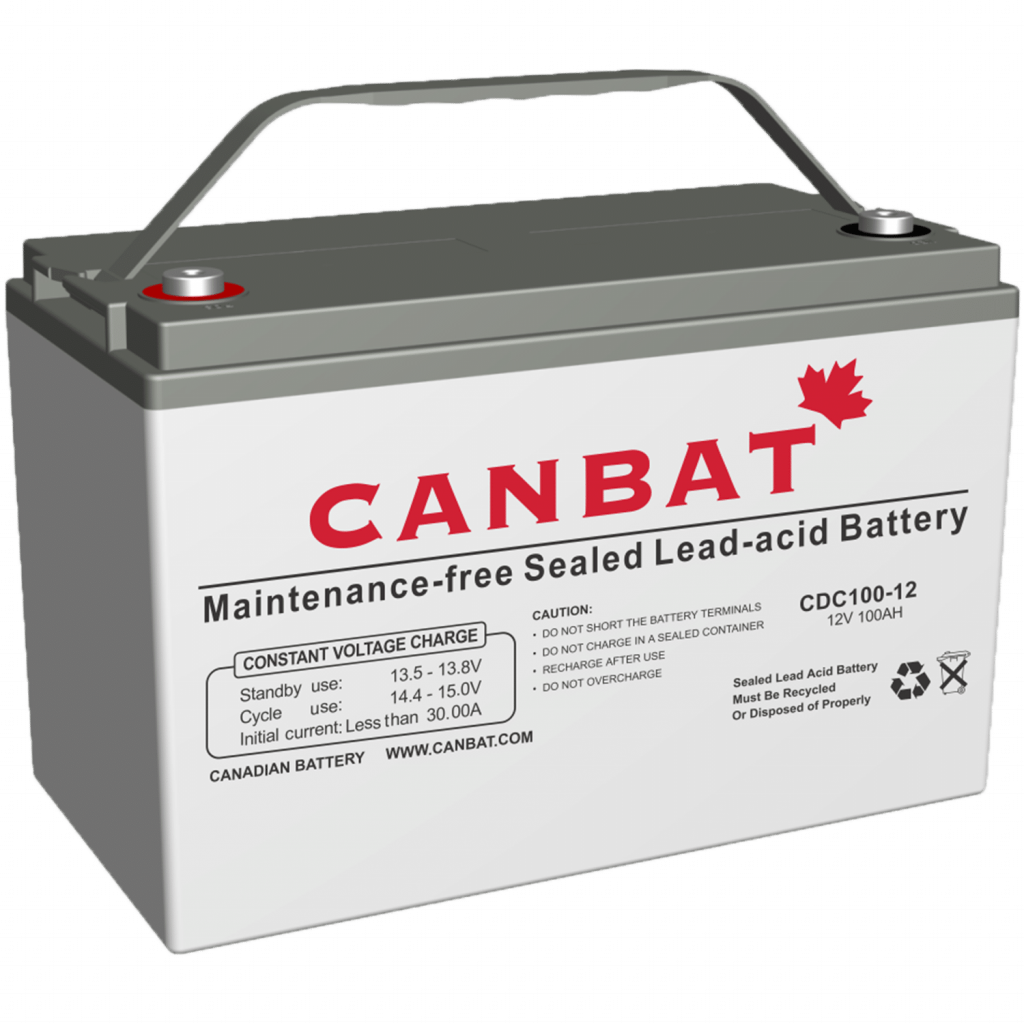
The Absorbed Glass Mat (AGM) solar battery is another type of lead-acid battery that was first manufactured in 1980.
It has the same components as a GEL battery, except the acid electrolyte is absorbed on a fiberglass matt. This makes the battery both safe and leakproof.
The working principle is also exactly the same as the GEL battery. A flow of H+ ions between the two electrodes generates a current.
Pros & Cons
Final Thoughts
It’s rather unfortunate that companies haven’t done more to assist their online customers with solar battery pricing information.
Sure, manufacturers like Battle Born, Renogy, Ampere Time, and Canbat have made an effort, but more can and should be done. After all, consumers are veering away from in-store purchases and relying more on the internet for their product needs – hence the rise of Amazon, etc.
All of that aside, we hope this article has given you a much clearer idea regarding 12V solar battery costs. Rest assured, we aim to add more content and make it even more comprehensive once we’ve gathered the necessary data!

